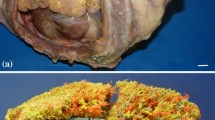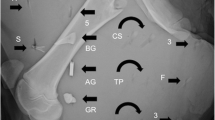Abstract
A new instrument for the assessment of oedema based on the impression method is described. The measurement parameters are defined and the errors corresponding to the electrical and mechanical stability of the instrument are measured. The overall accuracy is calculated theoretically for the translocated volume. The accuracy and reproducibility are evaluated on plastic foam. The clinical procedure to measure oedema with this instrument is described. We show that the accuracy of the translocated volume parameter is very dependent on the overall stability of the instrument and that this instrument has an overall relative error of less than 7·3 per cent for a representative measurement. Experimental measurements on plastic foam show that the measurement parameters could be reproduced with standard deviations of less than 6 per cent and that the standard deviations for translocated volume are within the calculated overall relative error. Measurements on four patients with chronic oedema in an extremity show significantly different results on locations where pitting could be recognised compared to the contralateral nonoedematous extremity.
Similar content being viewed by others
References
Aukland, K. andNicolaysen, G. (1981) Interstitial fluid volume: local regulatory mechanisms.Physiol. Rev.,61, 556–643.
Bogen, D. K. (1987) Strain energy descriptions of biological swelling I: Single fluid compartment models.J. Biomech. Eng.,109, 252–262.
Doeblin, E. O. (1976)Measurement systems. McGraw Hill Inc., 38–209.
Finlay, J. B. (1978) Thixotropy in human skin.J. Biomech.,11, 333–342.
Guyton, A. C., Scheel, K. andMurphree, D. (1966) Interstitial fluid pressure: III Its effect on resistance to tissue fluid mobility.Circ. Res.,19, 412–419.
Guyton, A. C., Granger, H. J. andTaylor, A. E. (1971) Interstitial fluid pressure.Physiol. Rev.,51, (3), 527–563.
Mridha, M. andÖdman, S. (1985) Characterization of subcutaneous edema by mechanical impedance measurements.J. Invest. Dermat.,85, 575–578.
Mridha, M. andÖdman, S. (1986) Noninvasive method for the assessment of subcutaneous oedema.Med. & Biol. Eng. & Comput.,24, 393–398.
Mridha, M. andÖdman, S. (1989) Fluid translocation measurement.Scand. J. Rehab. Med.,21, 63–69.
Schade, H. (1912) Untersuchungen zur Organfunction des Bindesgewebes.Zeitschr. f. exp. Path. u. Therap.,11, 369–399.
Schwartz, A. B. (1916) The clinical study of edema by means of the elastometer.Arch. Internal. Med.,17, 393–403.
Swedborg, I. (1977) Voluminometric estimation of the degree of lymphedema and its therapy by pneumatic compression.Scand. J. Rehab.,9, 131.
Author information
Authors and Affiliations
Rights and permissions
About this article
Cite this article
Lindahl, O., Ängquist, K.A. & Ödman, S. Impression technique for the assessment of oedema. Med. Biol. Eng. Comput. 29, 591–597 (1991). https://doi.org/10.1007/BF02446090
Received:
Accepted:
Issue Date:
DOI: https://doi.org/10.1007/BF02446090




